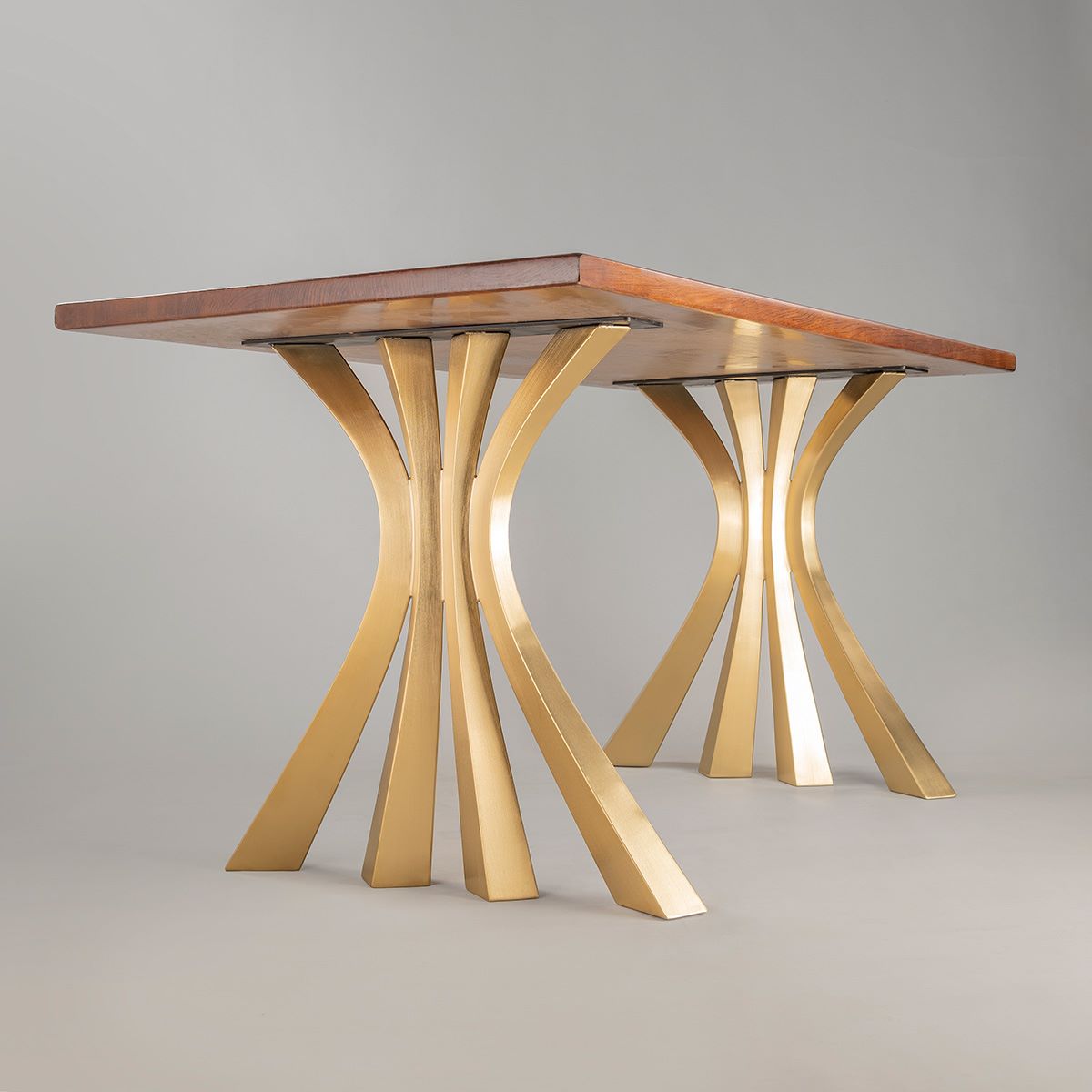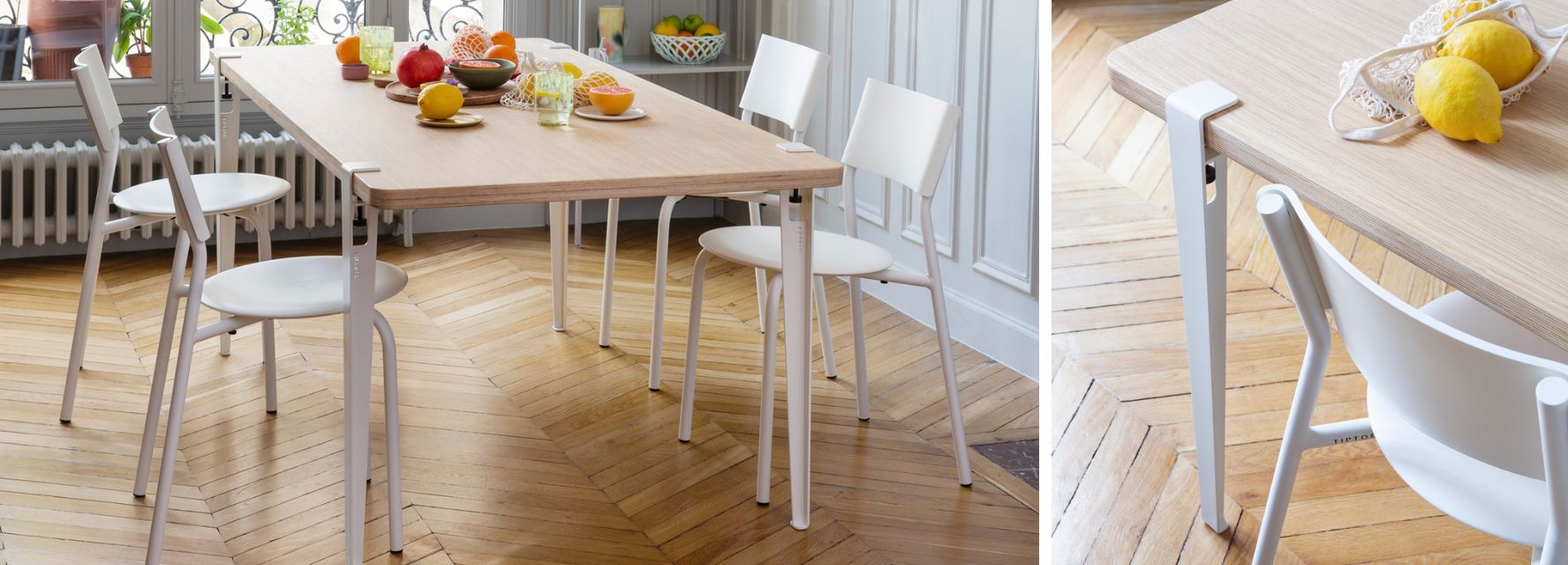Create Sensational Furniture with Elegant Dining Table Legs Wood Choices
Create Sensational Furniture with Elegant Dining Table Legs Wood Choices
Blog Article
Checking Out the Different Sorts Of Eating Table Legs Wood for Your Eating Area
The selection of eating table legs wood can profoundly impact both the aesthetic and functional top qualities of your dining room. Solid timber choices, such as oak and walnut, provide a timeless appearance with unrivaled longevity, while crafted wood options offer cutting-edge styles that resemble the richness of all-natural grains. Additionally, the expanding trend of recovered timber introduces a lasting component that attract eco conscious customers. As we check out these different alternatives, it becomes essential to think about not just the visual charm yet also the functional effects of each material option. What elements should assist your decision?
Solid Wood Options

Unlike crafted products, strong timber is much less susceptible to bending and damage over time when appropriately preserved. Each piece of solid wood is distinct, showcasing individual characteristics that add to the charm and character of the eating table.
In addition, strong timber can be completed in many methods, ranging from natural oils to stained finishes, allowing homeowners to customize their furniture to match their design. In summary, picking strong timber for eating table legs not only makes sure structural integrity but additionally boosts the visual appeal of the eating location, making it a beneficial investment for any kind of home.
Engineered Timber Alternatives

Plywood, constructed from numerous layers of wood veneer, is particularly solid and steady, making it a superb option for dining table legs. Its split structure enables it to stand up to modifications in moisture and temperature better than traditional strong wood. MDF, on the other hand, offers a smooth surface area for painting or veneering, making it possible for designers to attain a refined appearance while keeping architectural integrity.
Particleboard, often utilized in budget-friendly choices, provides good strength and is lightweight, making it simpler to manage. It may not be as durable as plywood or MDF. It is crucial to think about the desired usage and desired aesthetic when selecting crafted wood choices. These materials not only boost the functionality of dining spaces yet likewise enable greater layout flexibility, guaranteeing that modern and traditional styles can exist together harmoniously.
Reclaimed Wood Includes
Recovered timber supplies a distinct mix of sustainability and personality, making it an increasingly popular option for eating table legs. Sourced from old barns, factories, and various other structures, redeemed timber personifies a history that brand-new products merely can not duplicate. Each piece carries its very own story, noted by distinctive blemishes, knots, and differing grain patterns, which contribute to a table's unique aesthetic allure.
In enhancement to its visual charm, reclaimed timber is an eco-friendly choice. By repurposing previously used products, it lowers the need for new lumber, hence aiding to reduce and conserve woodlands waste. This aligns with an expanding consumer choice for lasting practices in home furnishings.
In addition, recovered wood is often extra long lasting than newly gathered wood as a result of its age. The natural drying out process that redeemed wood undertakes results in a denser and more powerful product, making it much less prone to warping and splitting. This boosts the long life of dining tables, enabling them to withstand the roughness of daily usage.
Softwood vs. Wood
When choosing table legs, understanding the distinctions in between softwood and hardwood is critical for accomplishing both visual and functional objectives. Softwoods, obtained from coniferous trees, such as ache and cedar, are defined by their lighter weight and convenience of manipulation. They normally exhibit a more rustic look, making them ideal for country-style or laid-back eating spaces. Nevertheless, softwoods are generally less long lasting than woods, which can be a consideration for households or those looking for longevity in other their furniture.
On the various other hand, woods, sourced from deciduous trees like oak, maple, and cherry, are renowned for their density, strength, and sturdiness. The complex grain patterns and rich hues of woods provide a classic and innovative allure, making them ideal for official eating settings. While hardwoods often tend to be extra pricey and much heavier, their durability against damage usually warrants the investment.
Ultimately, the choice in between softwood and wood for dining table legs need to straighten with your style vision, usage needs, and spending plan, ensuring that your eating space mirrors your personal style while remaining functional over time.

Treatments and finishes
The aesthetic appeal and longevity of dining table legs can be considerably improved through various finishes and therapies. These procedures not just safeguard the wood from damage however likewise raise its appearance, allowing it to complement varied indoor styles.
One common therapy is tarnishing, which passes through the timber and enhances its all-natural grain while including shade. Spots supply a rich, stylish appearance, making it possible for home owners to match their furnishings with existing design. Conversely, clear finishes such as polyurethane or varnish develop a protective layer without altering the timber's original hue, making certain longevity versus wear and tear.
In addition, natural oils, like tung or linseed oil, nourish the timber and offer a refined shine, all while being environment-friendly. These oils permit the surface to breathe, avoiding dampness accumulation and potential bending.
For those looking for a rustic beauty, distressed or weathered coatings can be applied to produce an aged look, including personality to the piece. Ultimately, the option of therapies and surfaces relies on personal choice, desired aesthetics, and the details wood kind, making it important to take into consideration these elements when choosing eating table legs for your space.
Final Thought
In conclusion, the choice of table leg materials substantially influences both the visual and useful aspects of a dining room. Strong woods, engineered options, and recovered alternatives each offer distinctive benefits, satisfying different choices and demands. Understanding the differences in between woods and softwoods, along with suitable surfaces and therapies, enables educated decision-making. Ultimately, the choice of wood type must straighten with preferred design, resilience, and environmental considerations, improving the general eating experience.
The selection of eating table legs wood can profoundly impact both the aesthetic and useful top qualities of your dining space - Dining Table Legs Wood. Strong timber choices, such as oak and walnut, supply a traditional look with unrivaled longevity, while crafted timber options provide innovative layouts that simulate the richness of natural grains. Strong wood provides a classic top quality that can raise the total layout of official site a dining space. Each item of find more information solid wood is one-of-a-kind, showcasing private qualities that add to the beauty and character of the eating table
Moreover, recovered timber is commonly much more durable than freshly gathered timber due to its age.
Report this page